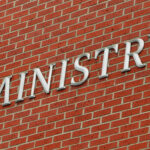
The term “mission church” has long been used to describe those churches dedicated to sending qualified missionaries to either domestic or international locations to evangelize. Many also provide support and assistance to people in need, offering help in the form of education, medical care, construction, infrastructure building and more.
But while many churches may refer to themselves as mission churches, the Missionary Church holds the term as their formal title. The Missionary Church is an evangelical Protestant denomination (although they refer to themselves as a “family of churches”) with deep roots in the Anabaptist, German Pietism, and American evangelicalism faiths. They are a member of the National Association of Evangelicals (NAE).
Committed to worldwide evangelism, discipleship, and church planting, the Missionary Church has been long known for its fervent outreach efforts. The church describes itself as being…
Explore a Christian Ministry Degree – Request More Info Today!
- Biblically grounded – faithful to core biblical doctrines
- Relationally connected – focused on improving ministry effectiveness through inspiring and partnering with one another
- Creativity embracing – local churches are free to minister according to their own needs
- Leadership empowering – focused on identifying and developing effective leaders
- Kingdom minded – committed to partnering with like-minded organizations
What Does the Missionary Church Believe?
The church is inspired by…
- John Wesley’s “warmed heart” (It is said that Wesley, a theologian, cleric, and evangelist, experienced an evangelical conversion at a group meeting in a Moravian chapel on Aldersgate Street in London, calling his heart “strangely warmed”)
- B. Simpson’s emphasis on Jesus Christ as (1) Savior; (2) Sanctifier; (3) Healer; and (4) Coming King (A.B. Simpson was the founder of the Christian and Missionary Alliance, an evangelical denomination focused on global evangelism.)
- The Anabaptist dedication to community and brotherhood
- The evangelical emphasis on the lost estate of mankind and redemption through Jesus Christ
 The Missionary Church believes that the Bible is without error and is the divinely inspired Word of God. And, true to its name, the church is fully committed to the Great Commission – multiplying disciples who multiply disciples who multiply disciples.
The Missionary Church believes that the Bible is without error and is the divinely inspired Word of God. And, true to its name, the church is fully committed to the Great Commission – multiplying disciples who multiply disciples who multiply disciples.
The Great Commission is a concept that is used in many Christian denominations to highlight the importance of spreading the Word of God through missionary activities. The term, first used as far back as the 17th century, refers to a number of passages in the Gospel of Matthew where Jesus encourages his apostles to make “disciples of all nations” (i.e., followers of Jesus). The passages in Matthew are interpreted as Jesus urging his apostles to spread the Word of God and convert others to Christianity.
The Missionary Church focuses more on the Great Commission than on being a denominational organization. In short, they identify more with what they do than with who they are.
The Missionary Church welcomes churches who are committed to the Great Commission. Therefore, it serves as more of an umbrella of organizations who share a common goal of world missions and church planting. The reach of the Missionary Church is broad, thanks to longstanding partnerships with local, district, and regional ministries and major organizations like World Partners, the Missionary Church Investment Foundation, and Generate:
World Partners is the international ministry of the Missionary Church that commissions more than 80 professional ministries, all of which are focused on “making disciples around the world.”
The Missionary Church Investment Foundation provides low-cost loans to churches and ministries to help them grow and extend their reach.
Generate is an organization that supports the Missionary Church’s mission through funding, coaching, training, networking, credentialing, and more. The Generate network allows like-minded churches to learn from one another and gain access to valuable resources.
Examining the Roots of Protestant Mission Work in America
 Though Christian mission work has roots dating back centuries, it was the evangelical Protestantism movement in the late 1700s and their desire to spread God’s word that brought the concept of mission work to the forefront in America. The first mission efforts were focused on connecting to non-Christians and encouraging their conversion to Christianity, which was similar to the earliest European settlers who introduced Christianity to the Native Americans and the French Jesuits who founded mission settlements in California.
Though Christian mission work has roots dating back centuries, it was the evangelical Protestantism movement in the late 1700s and their desire to spread God’s word that brought the concept of mission work to the forefront in America. The first mission efforts were focused on connecting to non-Christians and encouraging their conversion to Christianity, which was similar to the earliest European settlers who introduced Christianity to the Native Americans and the French Jesuits who founded mission settlements in California.
After the Revolutionary War and the subsequent collapse of the Anglican tradition in America, the Methodists jumped in and assumed the mission work that was started by the Anglican Society for the Propagation of the Gospel.
The first Methodist bishop in America, Francis Asbury, spent his lifetime as a missionary. He traveled the country, spreading the Word of God up until his death in 1816. Mission work around this time took on a fevered pitch as Christians seeking a more Christian nation began increasing their missionary efforts. Missions to foreign lands soon became part of the Methodist tradition, and many American foreign mission trips followed suit.
In 1812, the New York Tract Society began spreading the Word of God through printed pamphlets, while Philadelphia’s First Day Society founded the first Sunday school. Sunday schools soon became identifiable with evangelical Protestantism and were largely focused on spreading Christianity.
Other denominations, like the Massachusetts Congregationalists, soon began founding their own mission societies, and they recruited men and women to travel with planned mission trips. Missionary groups like the Boston Female Society for Promoting the Diffusion of Christian Knowledge and the Cent Institution often joined forces with Protestant churches to pool their resources in an effort to achieve their mission goals. In 1801, the New England Congregationalists and the New York Presbyterians banded together in what they called a “Plan of Union” to establish the future direction of mission work.
Mission work soon became a part of the Protestant mainstream in America and has remained since. Mission work now serves as an important movement in the Protestant religions and has undoubtedly shaped both religion and American culture.
The Reach and Influence of the Missionary Church by the Numbers
Today, the Missionary Church includes more than 2 million people within more than 20,000 congregations in more than 100 countries. In the U.S. alone, more than 500 congregations are part of the Missionary Church.
The Missionary Church is organized into the following regions and districts:
- Caribbean Region
- Puerto Rico District
- Central Region
- Crossroads Church Planting Network
- Downstate Illinois Mission District
- Hispanic Mission District
- Oikos Network
- Central Region
- Connect Region
- Connect Florida
- Cultivate Network
- Epic Network
- Georgia/Alabama Mission District
- Indiana Ohio District
- Kentucky/Tennessee Network
- Mid-Atlantic Mission District
- Missionary Church Florida Hispanic District
- North/South Carolina
- Pennsylvania Network
- The Table Network
- Central Region
- Connect Region
- East Central Region
- Eastern Region
- Boston Mission District
- Michigan Region
- Metro Detroit Network
- Thumb Network
- West Michigan District
- Mid-South Region
- Central Texas Mission District
- El Paso Mission District
- Houston Mission District
- Real Life Network
- Rio Grande Valley Mission District
- Midwest District
- North Central District
- Northwest Region
- ACTX Network
- Pacific Rim Region
- Aloha Network
- Pacific Missions Network
- Pacific Territory Network
- Western Region
The History of the Missionary Church
 The Missionary Church traces its roots back to the Anabaptist (meaning “rebaptizer”) Reformation – also known as the Radical Reformation - that took place in the early 16th century. The Anabaptist Reformation was a fringe movement of the larger Protestant Reformation. One of the most distinct features of the Anabaptist Reformation was the adult, or second, baptism – a crime that was punishable by death during those times. Though Anabaptist preachers were persecuted by both Roman Catholic and Protestant states alike (and often drowned in rivers or burned at the stake), the movement still spread throughout the German and Dutch-speaking regions of Europe.
The Missionary Church traces its roots back to the Anabaptist (meaning “rebaptizer”) Reformation – also known as the Radical Reformation - that took place in the early 16th century. The Anabaptist Reformation was a fringe movement of the larger Protestant Reformation. One of the most distinct features of the Anabaptist Reformation was the adult, or second, baptism – a crime that was punishable by death during those times. Though Anabaptist preachers were persecuted by both Roman Catholic and Protestant states alike (and often drowned in rivers or burned at the stake), the movement still spread throughout the German and Dutch-speaking regions of Europe.
Anabaptists were largely pacifists who practiced true brotherhood and refused to bear arms. They also called for the separation of church and state. Menno Simons, a Catholic priest, converted to the Anabaptist faith and soon established what would be known as the Mennonites. Because of the risk of persecution and death, many Anabaptists began migrating out of Europe and to places like Pennsylvania. (Today, Pennsylvania still has a large Mennonite population.)
Pietism, which emphasized practical holiness, became a large influence in the Mennonite communities. Pietism included an emphasis on a personal conversion experience, daily Bible study, evangelistic preaching, and mission efforts. Many revival movements were born out of pietism.
The American Holiness Movement of the 18th century (spearheaded by John Wesley) and the formation of the Methodist Church, followed by Wesleyan Holiness and Keswickian Holiness in the 19th century (both of which emphasized a “second blessing” or “crisis experience”) all influenced the formation of the Missionary Church.
America’s 19th century churches and the revival and social movements born out of them had an impact on some Mennonite preachers of the time, including Daniel Brenneman, Solomon Eby, William Gehman, and J.E. Ramseyer, all of whom began a revival of the Mennonite churches based on America’s evangelical innovations.
However, most Mennonite churches at the time were at odds with some of their beliefs and practices (e.g., baptism by immersion, unsanctioned prayer meetings, and the eminent return of Christ), leading to these preachers and others leaving the church and starting their own denominations, including the Reformed Mennonites, the New Mennonites, and the United Mennonites. In 1879, Gehman, Brenneman, and Eby created the Evangelical United Mennonites and just a few years later, an Ohio group joined, and the denomination became known as the Mennonite Brethren in Christ.
In 1947, the Mennonite Brethren in Christ changed their name to the United Missionary Church.
In 1969, the Missionary Church Association and the United Missionary Church, both of which were dedicated to preaching the Bible and evangelizing the world, merged to become the Missionary Church.









